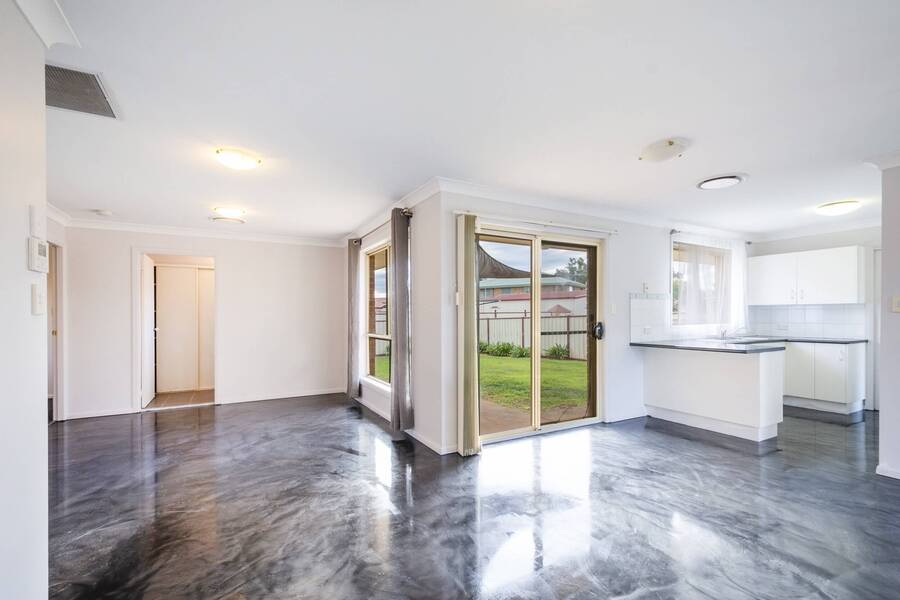Is Epoxy or Traditional Flooring Better for My Space?
When it comes to flooring, there are a lot of options available. Epoxy and traditional flooring are popular choices, but which is better for your space? In this article, we’ll explore the differences between epoxy and traditional flooring and discuss which might be best for you. We’ll look at durability, cost, ease of installation, design options, and more. So if you’re trying to decide between epoxy or traditional flooring for your next project, read on!
Enhanced Durability
Epoxy and traditional flooring both have their merits when it comes to durability. Epoxy is an extremely hard-wearing material, able to withstand heavy foot traffic and potential spillages or damage from dropped items. It’s also highly resistant to water and chemical damage, so it can be used in areas with increased moisture without risk of discoloration or structural damage.
Traditional flooring, such as timber or tile, can be durable if properly maintained. Regular cleaning and sealing will help ensure the surface remains solid and scratch-resistant for many years. In terms of longevity, epoxy, and traditional flooring can offer great results if given the necessary care and attention. Ultimately, it comes down to personal preference and what works best for your space.
Cost
The clatter of the hammer and the buzz of the drill echoed through the room, making it seem as if a dozen workers were on site. The epoxy flooring installation was underway – its glossy surface reflecting what little light managed to make its way into the space. Clearly, this type of flooring had been chosen for its durability; it could withstand years of wear and tear without needing to be replaced.
Traditional flooring, on the other hand, may offer up a more unique look or texture, but it is likely to require more frequent replacement in order to maintain its appearance over time. When considering cost, epoxy flooring is often considered the more economical option since it requires less maintenance and lasts longer than traditional flooring.
Ease of Installation
Making the decision between epoxy and traditional flooring can be a difficult one. However, the choice is clear when it comes to ease of installation. Installing epoxy floors is much less labor-intensive than traditional methods, making it an attractive option for any space where time and efficiency are essential. With epoxy floors, there’s generally no need for additional work such as grinding or polishing.
In addition to being easier to install, epoxy floors are more durable than traditional options and require little maintenance. This makes them an excellent choice for busy areas where heavy foot traffic is expected. Ultimately, deciding which type of flooring is best for your space will depend on your specific needs and preferences, but when it comes to ease of installation, epoxy floors are hard to beat.
Design Options
Epoxy flooring is relatively easy to install, as it usually requires no more than a few hours of work. However, traditional flooring can be slightly more complicated and time-consuming, depending on the materials used. Traditional flooring usually requires more preparation, planning, and installation steps.
When it comes to design options, epoxy flooring has come a long way in recent years and provides a wide range of colors and textures to choose from. This makes it an attractive option for modern homes or businesses that want to make a statement with their floors. On the other hand, traditional flooring offers plenty of design options for those looking for something more classic or timeless. Depending on your needs, either option can provide you with beautiful results.
Maintenance and Care
Maintenance and care of both epoxy and traditional flooring are important factors to consider when deciding which type of flooring is best for a space. Epoxy flooring requires minimal maintenance, as it simply needs to be swept and vacuumed regularly to keep dust and dirt at bay. Additionally, it can also be mopped with a damp mop or cloth without the need for harsh chemicals or cleaning products. Traditional flooring typically requires more maintenance than epoxy floorings, such as regular sweeping and vacuuming, occasional mopping with a mild detergent or soap solution, and even waxing or polishing.
Depending on the specific type of traditional flooring, some may require additional maintenance processes beyond what is mentioned above. Ultimately, when choosing between epoxy or traditional flooring for a space, the desired level of maintenance should be considered since each has its own unique requirements.
Key Takeaways
- Epoxy flooring is a popular choice for high-traffic areas because of its durability and resistance to stains, chemicals, and wear and tear.
- Traditional flooring options like carpet, tile, and hardwood have their own benefits and drawbacks, depending on the specific needs of your space.
- Epoxy flooring is typically more cost-effective in the long run, as it requires less maintenance and has a longer lifespan than many traditional flooring options.
- The choice between epoxy and traditional flooring ultimately comes down to factors such as the type of space, the amount of foot traffic, and the desired look and feel, and it should be based on a careful assessment of your specific needs and priorities.

